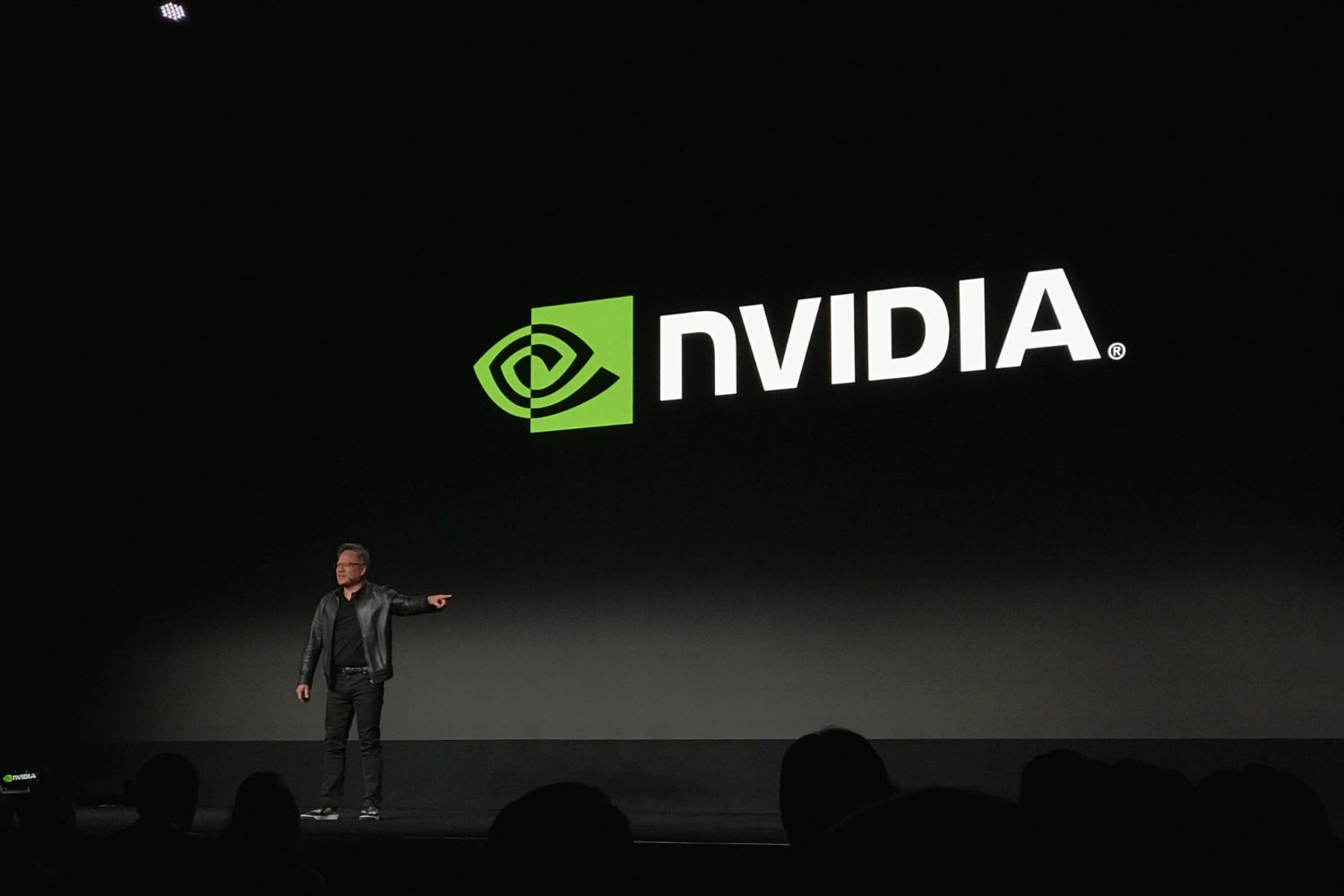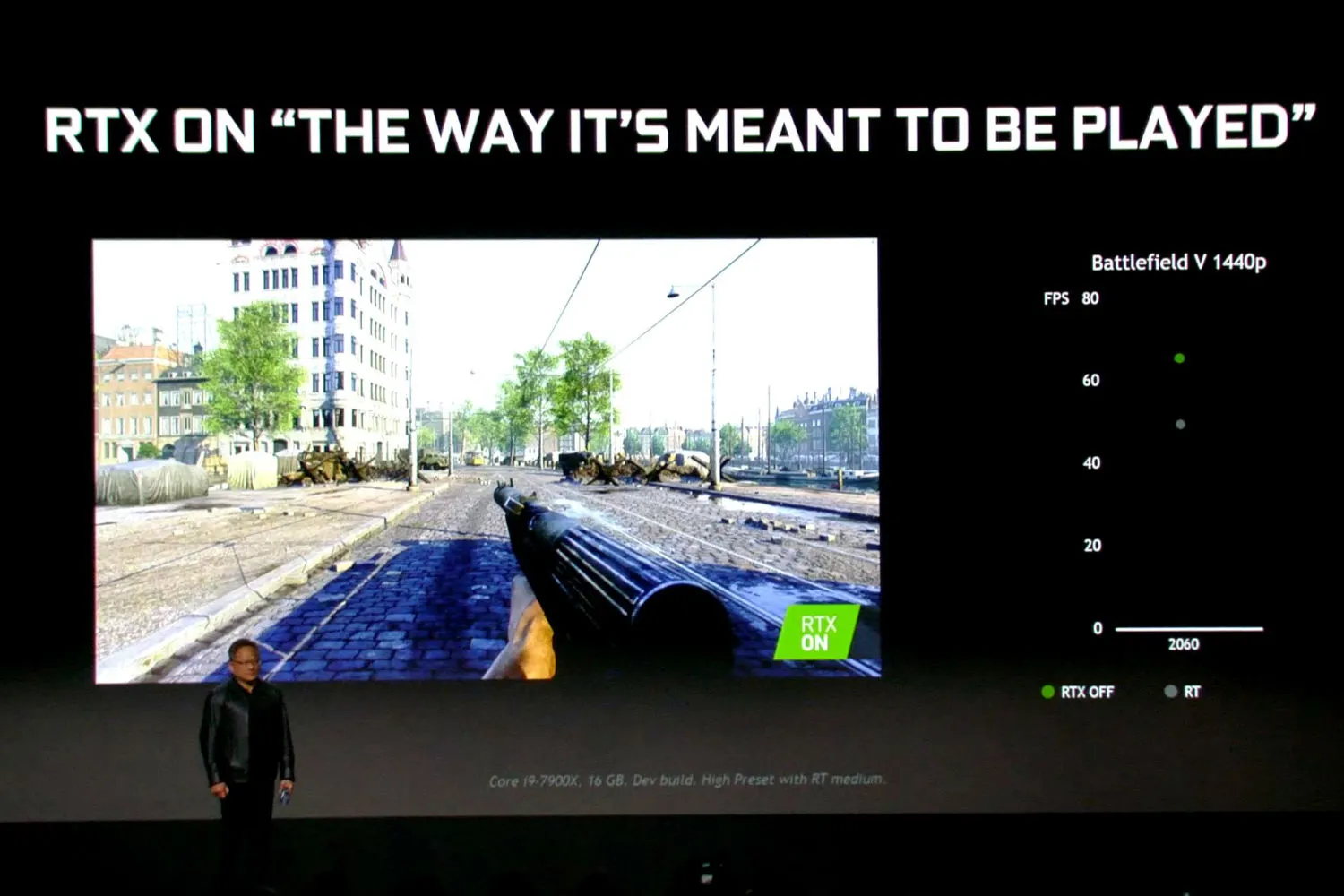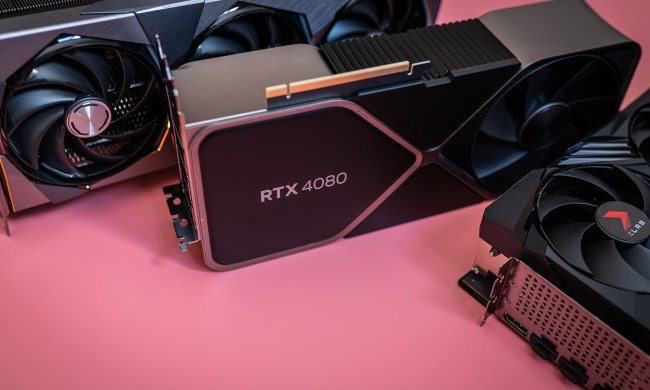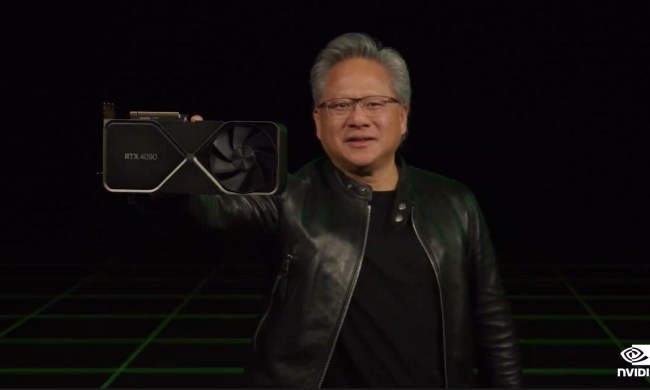
“Usually at CES, I talk about self-driving cars and gaming, but today I am only going to talk about gaming,” Nvidia CEO Jensen Huang said as he kicked off his CES 2019 keynote with a focus on the technologies that will enable the next generation of gaming. The crowd went wild. At the heart of the modern gaming revolution is the GPU, or graphics processor, but there are still things that were missing that made games appear less realistic.
“There are three things that are largely missing,” Huang said. “Reflections aren’t right. Shadows aren’t right. And refractions are really hard to do. These three lighting effects are really hard to do in rasterization… and that’s where ray-tracing comes in.”
Nvidia continued to focus on real-time ray tracing, a technology that was introduced late last year as part of the launch of the flagship GeForce RTX 2080 Ti graphics card, to deliver realistic visuals in games, but at CES, it talked about how it is improving framerates when RTX is enabled by using artificial intelligence. Here are all of the most important things Nvidia announced in its CES 2019 press conference.
Upping the framerates

The technology took ten years to create, and it’s found on the latest Turing architecture on its latest RTX-series graphics chips, which includes the Turing GPU, the shader architecture, tensor core, and a dedicated ray-tracing car.
The problem when ray-tracing is enabled, Huang admitted, is that even though scenes in a game gains fidelity and appears more detailed and true-to-life, framerates dropped, and gamers may not be willing to make that compromise. “With ray-tracing, we’ve added a ton more computing workload,” Huang said. “As a result, framerates dropped.”
More CES 2019 coverage
- Our CES 2019 Hub: The latest news, hands-on reviews, and more
- Samsung debuts monster 98-inch QLED 8K TV at CES 2019
- Sony debuts its massive Master Series 8K consumer TV at CES 2019
- Samsung’s blistering 219-inch Micro LED TV will cook your eyeballs, blow your mind
- LG’s roll-up OLED TV is every bit as magical as you’ve imagined
To recover the lost framerates when ray-tracing is enabled, Nvidia demonstrated how DLSS, or deep learning super sampling, can be used. In games that support DLSS, Nvidia claimed that when ray-tracing is enabled, framerates would not be impacted. Artificial intelligence on the tensor core is used to study a large sample of images. This helps the game renders scenes quickly, boosting the framerates, with the overall scene appearing more detailed compared to traditional temporal anti-aliasing techniques.
While all of this has been demoed on the flagship RTX 2080 graphics card, Nvidia showed that ray-tracing and DLSS can be used on the newly launched GeForce RTX 2060 card at 1440p on Battlefield V. The card will be available for $349 on January 15.
Bringing G-Sync to A-Sync monitors

To help gamers get the most out of their games, even if they’re not using a monitor with G-Sync technology, Nvidia announced a new initiative that will have the company testing and certifying existing A-Sync monitors on the market today. Adaptive Sync, or A-Sync, displays that pass Nvidia’s testing will become certified. To date, there are more than 550 models on the market, of which 400 have been tested and only 12 passed Nvidia’s test.
Because G-Sync panels use a custom chipset in the monitor and ships with drivers that allows the display to talk to the games, this helps the monitor anticipate which frame to display on the screen to reduce tearing, stuttering, ghosting, and blurring. Since A-Sync monitors don’t come with Nvidia’s custom display processor, it’s harder to achieve this, but Huang promised that if those displays pass Nvidia’s rigorous certification, then the company will enable drivers to give it G-Sync-like capabilities.
Mobile RTX

As part of Nvidia’s mission to create the ideal PC for gamers, and not just an ideal gaming PC, Huang also showed off the company’s mobile RTX cards, which will bring ray-tracing to laptops. This includes RTX 2080 and RTX 2060 notebook models. Nvidia claimed that 40 new notebooks will be announced at the show with RTX chips, of which 17 will conform to Nvidia’s Max-Q designs, which promises powerful graphics performance in a thin and light package.
Because gamers don’t just game, these initiatives are part of Nvidia’s focus on helping gamers utilize their existing PC or gaming notebook to perform productivity tasks. Nvidia also announced partnerships with Autodesk, RED cameras, OBS, and HTC for VR. The Autodesk partnership will unlock the power of RTX GPUs for 3D modeling and animation with the Arnold rendering software. Working with RED, Nvidia will help enable 6K and 8K video editing. Gamers looking to stream their games can do so in broadcast-level quality with OBS by using a single PC with RTX graphics, Nvidia said.



